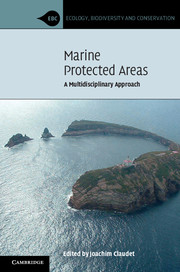Book contents
- Frontmatter
- Contents
- Contributors
- Introduction
- Part I Threats to marine ecosystems and resources
- Part II Effects of marine protected areas
- Part III Assessment of the effectiveness of marine protected areas
- 6 ECOLOGY – Assessing effects of marine protected areas: confounding in space and possible solutions
- 7 FISHERIES – Monitoring fisheries effects of marine protected areas: current approaches and the need for integrated assessments
- 8 BIOECONOMY – Bioeconomic analysis of marine protected area fisheries effects
- 9 SOCIO-ECONOMY – Assessing the impact of marine protected areas on society's well-being: an economic perspective
- 10 INDICATORS – Constructing and validating indicators of the effectiveness of marine protected areas
- Part IV Scale-up of marine protected area systems
- Index
- References
9 - SOCIO-ECONOMY – Assessing the impact of marine protected areas on society's well-being: an economic perspective
from Part III - Assessment of the effectiveness of marine protected areas
Published online by Cambridge University Press: 05 August 2012
- Frontmatter
- Contents
- Contributors
- Introduction
- Part I Threats to marine ecosystems and resources
- Part II Effects of marine protected areas
- Part III Assessment of the effectiveness of marine protected areas
- 6 ECOLOGY – Assessing effects of marine protected areas: confounding in space and possible solutions
- 7 FISHERIES – Monitoring fisheries effects of marine protected areas: current approaches and the need for integrated assessments
- 8 BIOECONOMY – Bioeconomic analysis of marine protected area fisheries effects
- 9 SOCIO-ECONOMY – Assessing the impact of marine protected areas on society's well-being: an economic perspective
- 10 INDICATORS – Constructing and validating indicators of the effectiveness of marine protected areas
- Part IV Scale-up of marine protected area systems
- Index
- References
Summary
Introduction
From an economic point of view, marine protected areas (MPAs) may be regarded as public investments in marine ecosystems conservation. As such, the basic question raised by their economic assessment is to determine how they modify society's well-being.
During the twentieth century, two types of methodologies have been developed for assessing the impact of public investments on society's well-being (Bénard, 1985): cost–benefit analysis (CBA) and multicriteria analysis (MCA). The major difference between these methodologies lies in the type of metrics used. While CBA relies on a single metric (money), MCA is multidimensional, taking into account variables that are expressed in various units (monetary, physical, qualitative,…). In this respect, MCA belongs to the same paradigm as indicators-based methods that have been recently developed for the monitoring of MPAs (e.g., Hockey and Branch, 1997; Pomeroy et al., 2004; Ojeda-Martinez et al., 2009). But the purpose of MCA, as well as of CBA, is not merely descriptive: these methodologies are intended to help decision-makers in the selection of public investment projects, which requires prioritization. In this respect, MCA is more complex than CBA since it uses variables that are, by nature, incommensurate. Several techniques have been developed to overcome this difficulty (e.g., Keeney and Raiffa, 1976; Roy, 1978; Saaty, 1980), but all of them retain an element of arbitrariness. As a result, CBA is usually considered by economists as the orthodox method for the evaluation of public investment projects.
- Type
- Chapter
- Information
- Marine Protected AreasA Multidisciplinary Approach, pp. 226 - 246Publisher: Cambridge University PressPrint publication year: 2011
References
- 4
- Cited by



